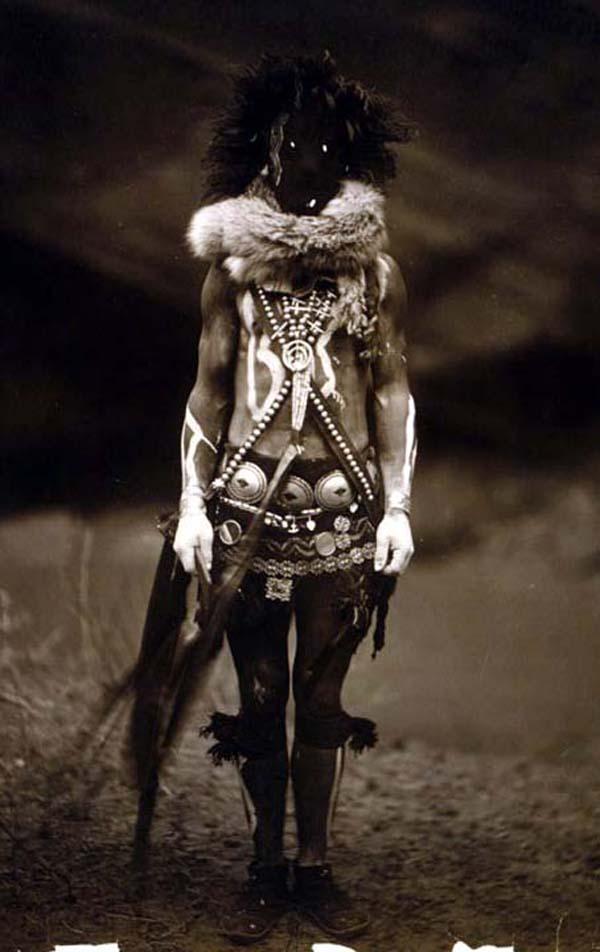Skinwalker images have long captivated the imagination of those interested in folklore, the supernatural, and Native American mythology. The legend of skinwalkers, or "yee naaldlooshii" in Navajo culture, involves shapeshifting witches who can transform into any animal they desire, often for malevolent purposes. Over the years, numerous photographs and artistic representations have emerged, each claiming to depict these elusive creatures. This article explores the eerie allure of skinwalker images, their cultural significance, and the impact they have on contemporary society.
In many Native American traditions, skinwalkers are considered taboo, and discussing them openly is often discouraged. As a result, the images associated with these beings can evoke a sense of fear and intrigue. In this article, we will delve into the origins of skinwalker lore, analyze popular skinwalker images, and examine how they shape popular culture and perceptions of the supernatural. By understanding the background of these mystical beings, we can appreciate the artistry and emotion captured in their imagery.
Furthermore, as the world becomes increasingly fascinated with the paranormal, skinwalker images serve as a bridge connecting ancient beliefs with modern interpretations. Whether through photography, digital art, or traditional paintings, these representations invite viewers to ponder the mysteries of the unknown. Join us as we embark on a journey into the world of skinwalker images and discover the stories they hold.
What Are Skinwalkers and Their Cultural Significance?
Skinwalkers are deeply rooted in Navajo culture, often depicted as malevolent beings that possess the ability to shapeshift into animals or other humans. These entities are said to be witches who have acquired supernatural powers through dark practices. The lore surrounding skinwalkers serves multiple purposes, including moral lessons, warnings against malevolence, and explanations for unexplained phenomena. Understanding the cultural significance of skinwalkers helps individuals appreciate the gravity of these legends in Native American traditions.
What Do Skinwalker Images Typically Depict?
Skinwalker images often showcase a variety of animal forms, including wolves, coyotes, and bears, reflecting the creatures these witches are believed to transform into. Artists may also represent skinwalkers in human form, often featuring unsettling characteristics that convey their supernatural essence. Common motifs include:
- Dark, shadowy figures
- Illuminated eyes that pierce through the darkness
- Animalistic features blended with human traits
- Depictions of transformation, illustrating the moment of change
How Have Skinwalker Images Evolved Over Time?
Historically, skinwalker imagery was transmitted through oral traditions, cave paintings, and textiles. With the advent of photography and digital art, the representation of skinwalkers has evolved dramatically. Today, artists utilize modern techniques to create striking visual interpretations that resonate with contemporary audiences. These images can be found on social media platforms, in films, and at art exhibits, showcasing the enduring fascination with skinwalker lore.
Are Skinwalker Images Used in Pop Culture?
Yes, skinwalker images have made their way into popular culture, influencing various forms of media. From horror films to television series, the depiction of skinwalkers lends an air of mystery and fear, captivating viewers. Notable examples include:
- Television series like "Supernatural" where skinwalkers are portrayed as formidable adversaries.
- Films that explore Native American legends, weaving skinwalkers into their narratives.
- Graphic novels and comic books that incorporate skinwalker lore into their storylines.
What Role Do Skinwalker Images Play in Modern Society?
In today's society, skinwalker images serve as a reminder of the rich tapestry of folklore and mythology that exists across cultures. They challenge individuals to confront their fears and explore the unknown. Additionally, these images can stimulate discussions on cultural appropriation, representation, and the importance of respecting indigenous narratives. By engaging with skinwalker imagery, society can foster a deeper understanding of the beliefs and traditions that shape our world.
What Are Some Notable Skinwalker Images in Art?
Several artists have gained recognition for their striking representations of skinwalkers. These images often evoke emotional responses, leading viewers to reflect on the intersection of fear and fascination. Some notable works include:
- Paintings by contemporary Native American artists that reinterpret traditional skinwalker legends.
- Digital art pieces that utilize surrealistic techniques to convey the essence of skinwalkers.
- Photography documenting rural landscapes where skinwalker sightings have been reported, adding authenticity to the lore.
How Can One Safely Explore Skinwalker Imagery?
For those interested in exploring skinwalker images, it is crucial to approach the subject with respect and sensitivity. Here are a few guidelines to consider:
- Educate yourself about the cultural significance of skinwalkers and their place in Native American folklore.
- Support Native artists and creators by purchasing authentic works and promoting their narratives.
- Engage in discussions that honor the traditions and beliefs of indigenous communities.
What Are the Ethical Considerations Surrounding Skinwalker Images?
As with any cultural representation, ethical considerations play a vital role in how skinwalker images are perceived and shared. Issues of cultural appropriation, misrepresentation, and commodification can arise when non-indigenous individuals engage with skinwalker lore. Understanding the origins and meanings behind these images is essential to ensuring respectful dialogue and appreciation.
Can Skinwalker Images Influence Beliefs and Perceptions?
Indeed, skinwalker images can significantly influence beliefs and perceptions surrounding the supernatural. They can shape how individuals view folklore, prompting both fascination and fear. The portrayal of skinwalkers in media can perpetuate stereotypes or misconceptions, challenging audiences to critically assess the narratives they consume. As viewers engage with these images, they must remain aware of their impact on cultural understanding and representation.
In conclusion, skinwalker images embody a rich confluence of mythology, artistry, and cultural significance. They invite viewers to explore the depths of folklore while navigating the complexities of representation and perception. As we continue to engage with these evocative images, let us do so with respect, curiosity, and a commitment to honoring the traditions they represent.
Ariana Angels: The Enigmatic Presence Behind The Star
Unveiling The Life Of Sarah Knite: A Journey Of Passion And Resilience
Unveiling The Life And Legacy Of Stephanie Honoré


